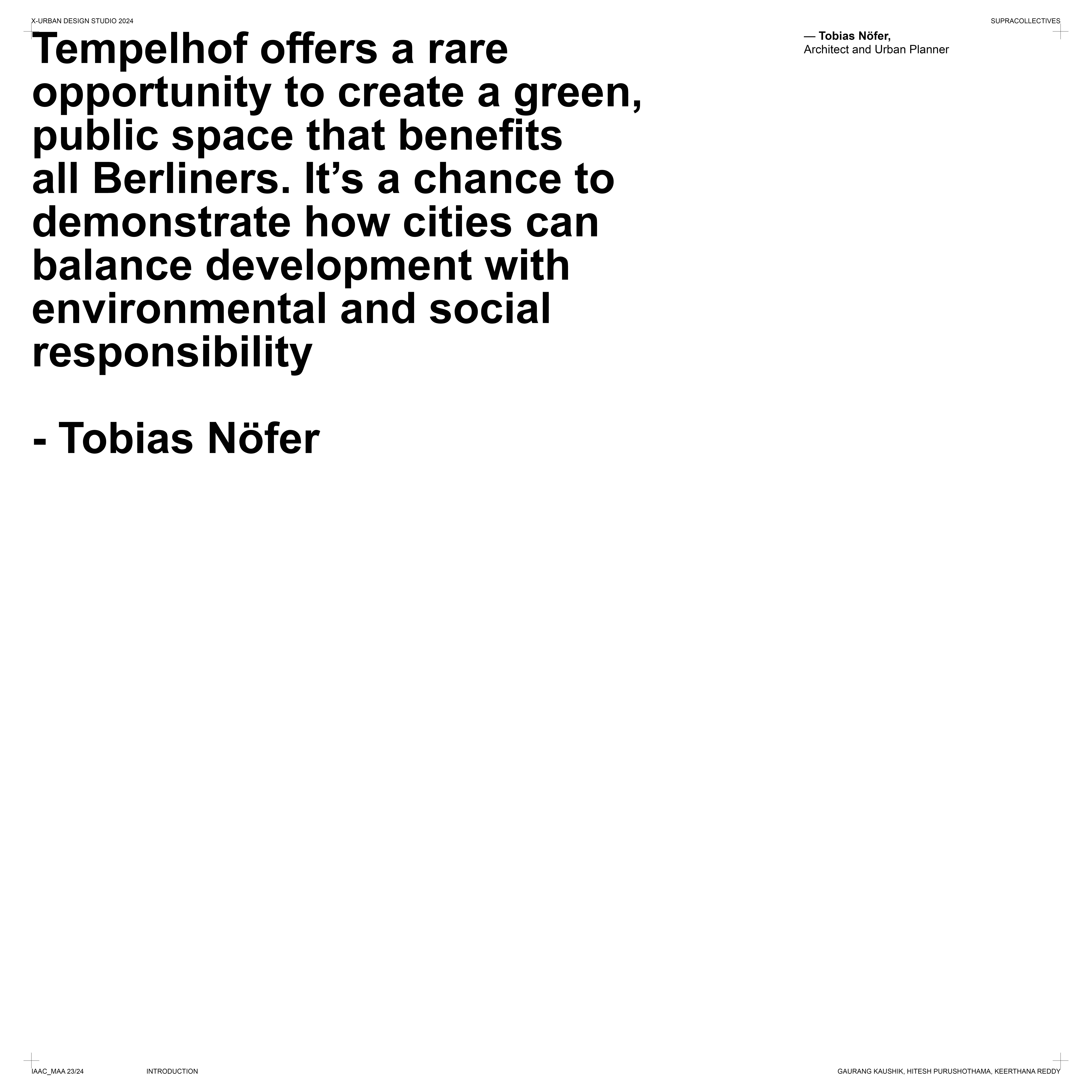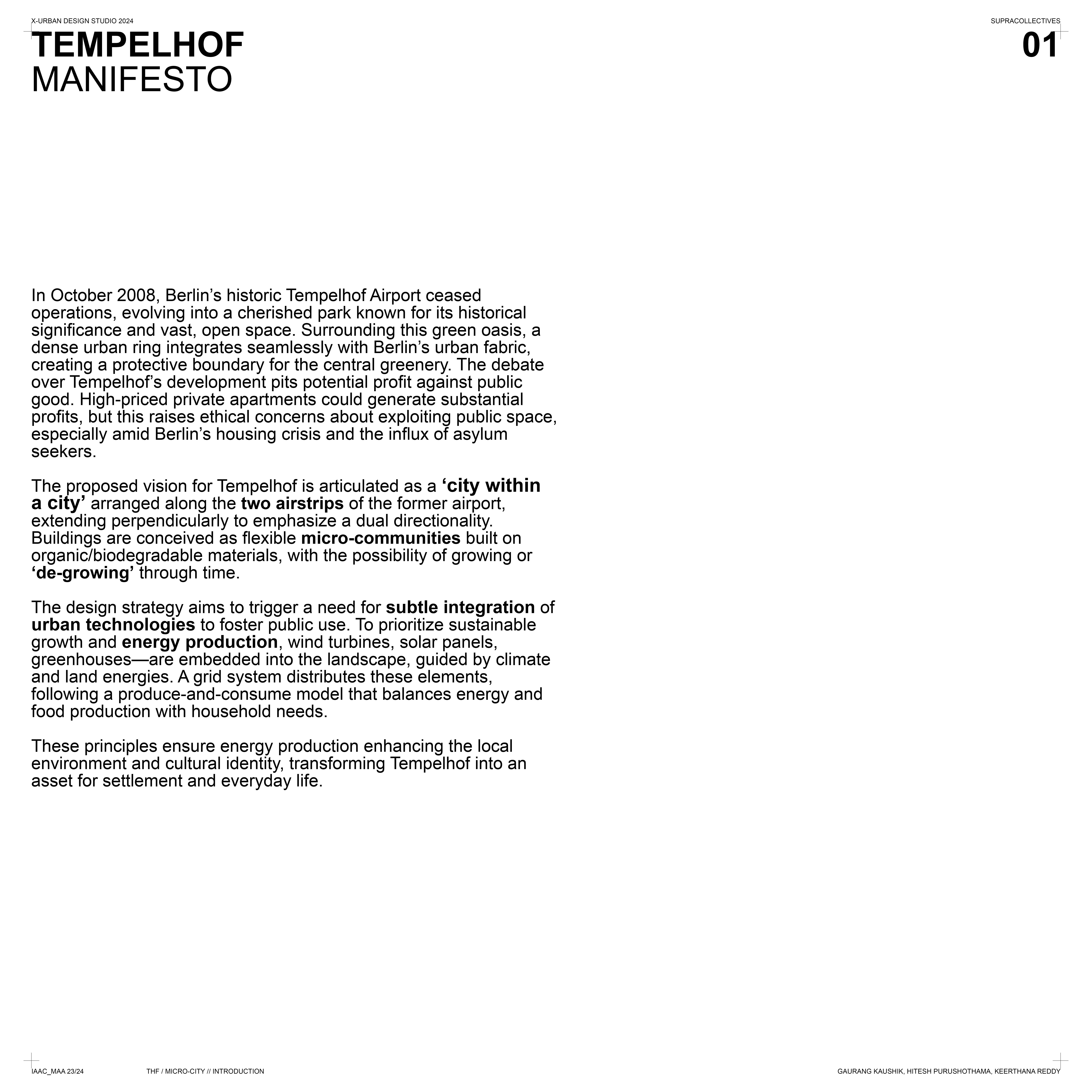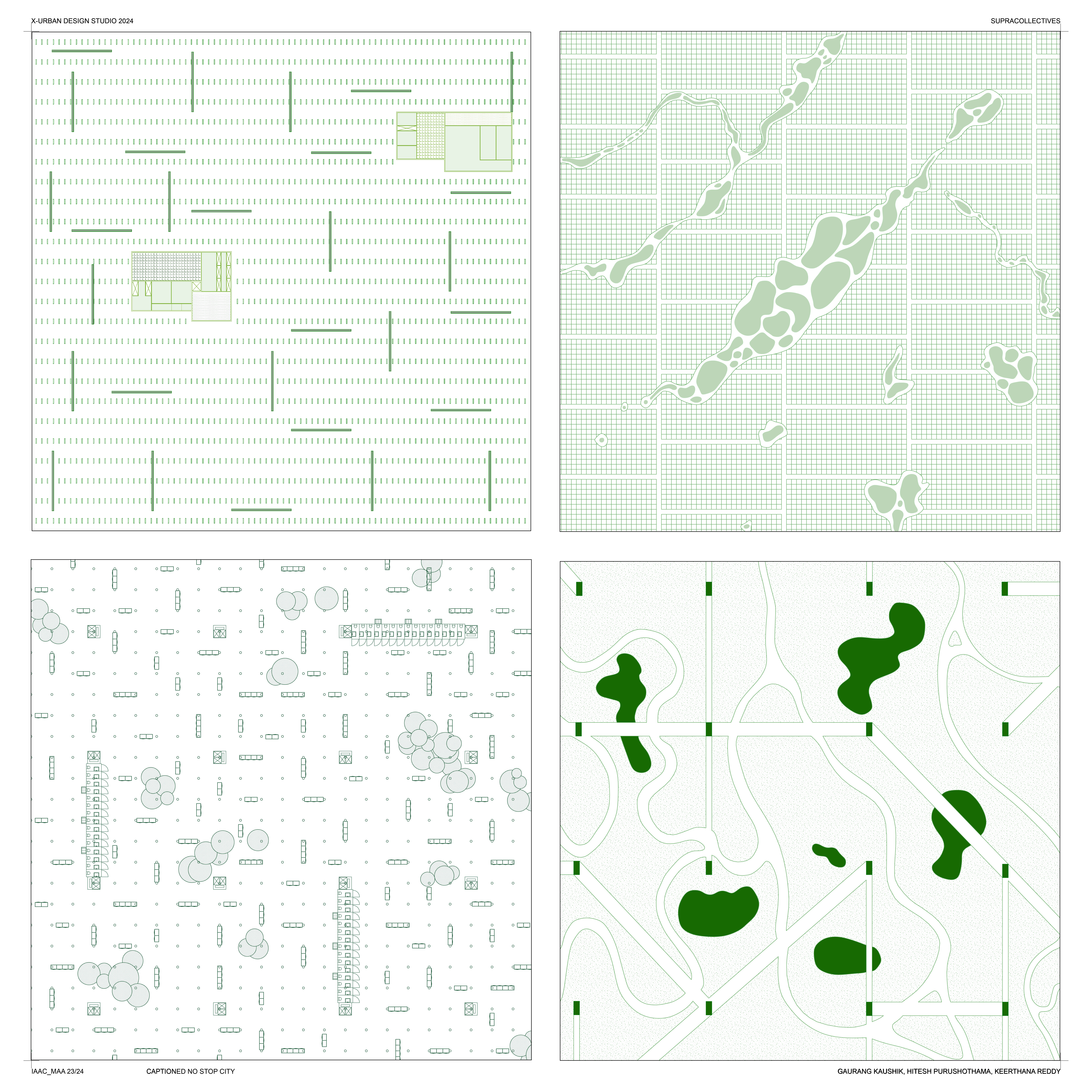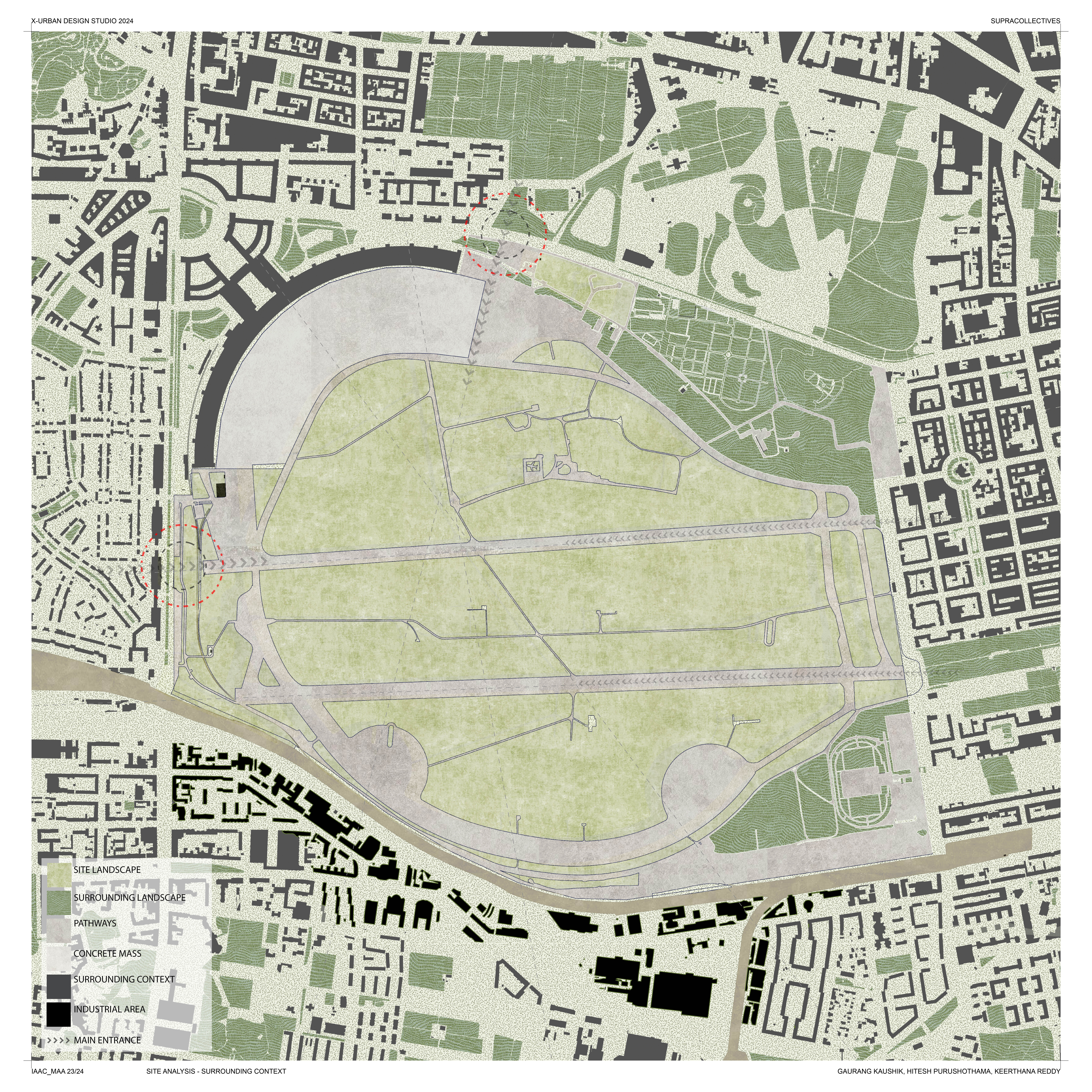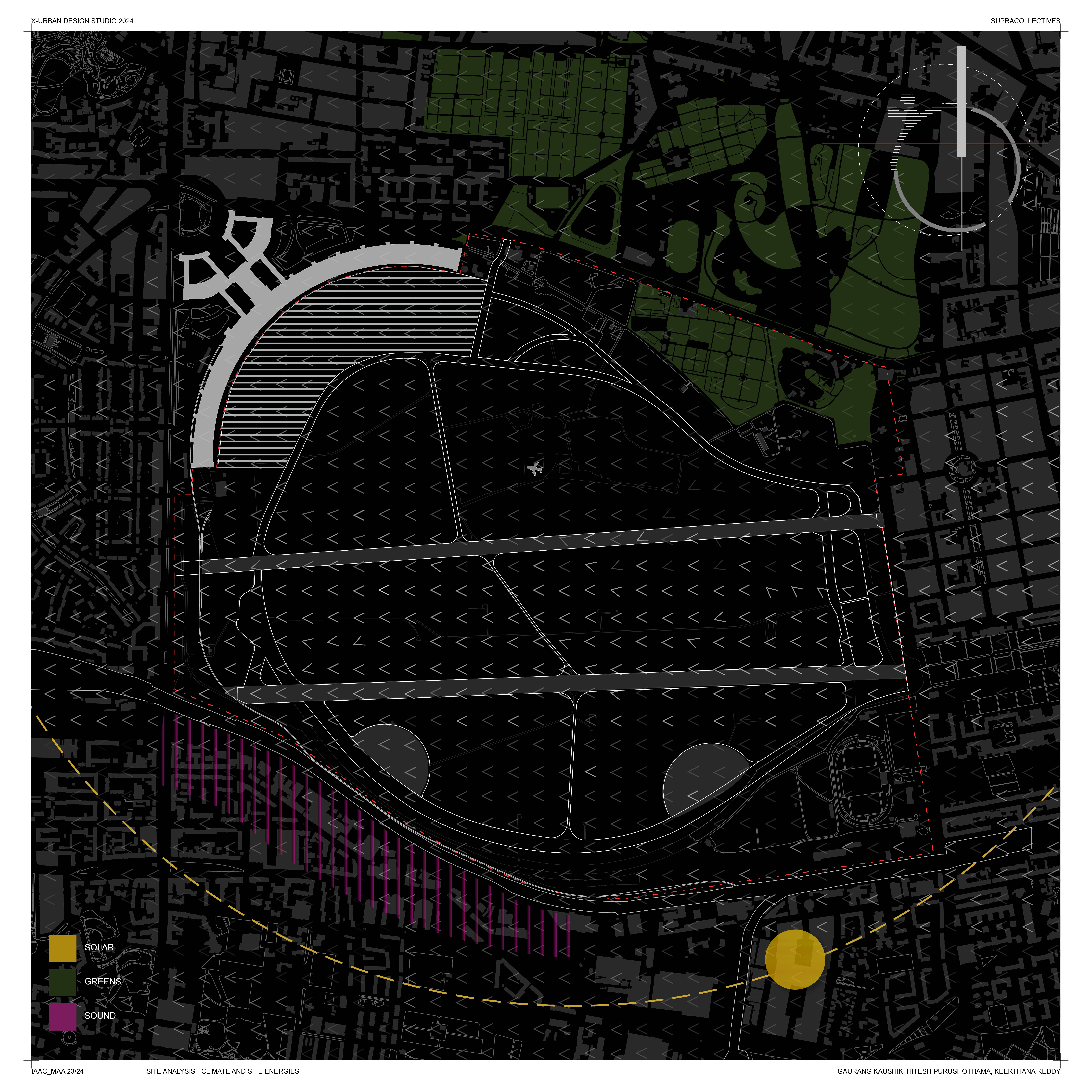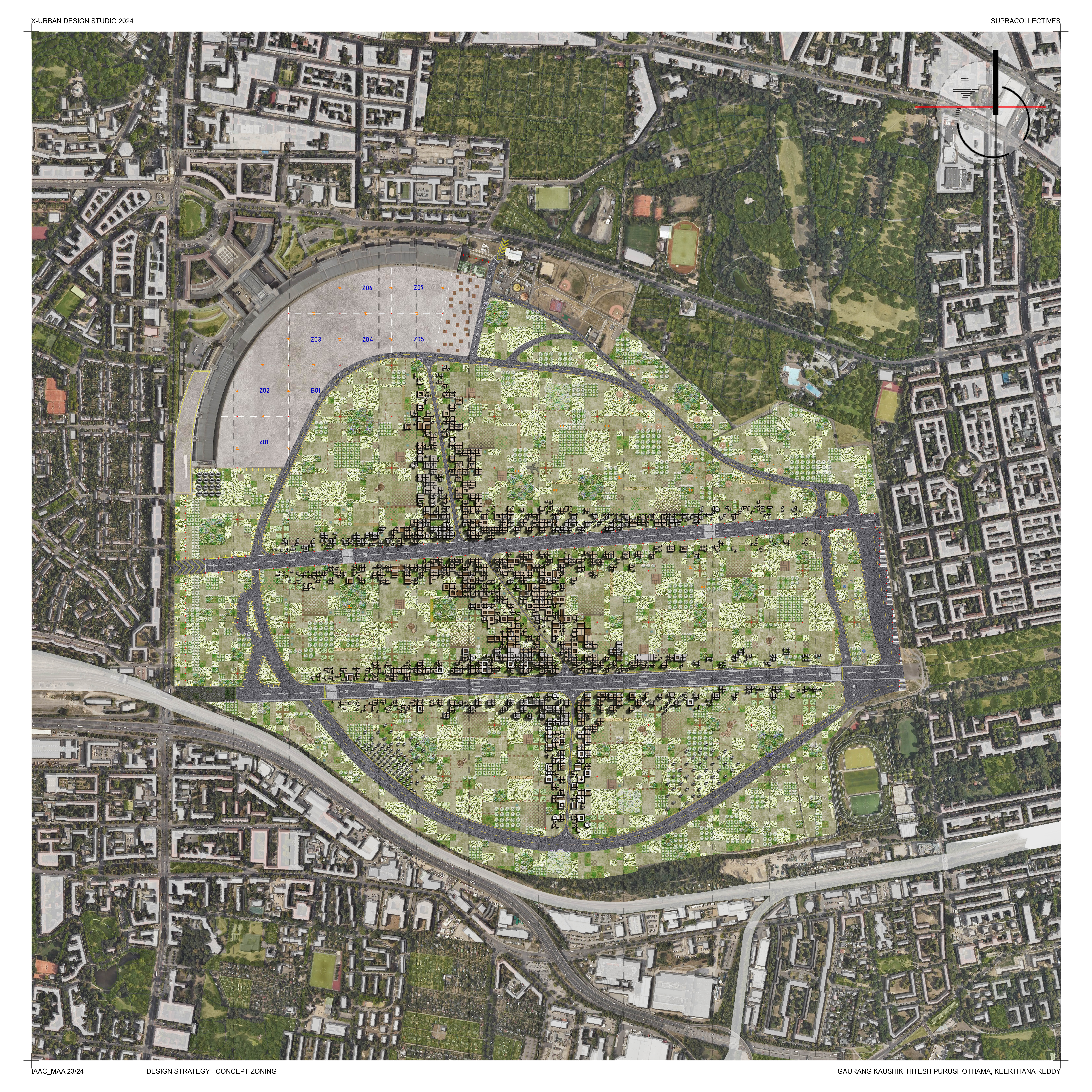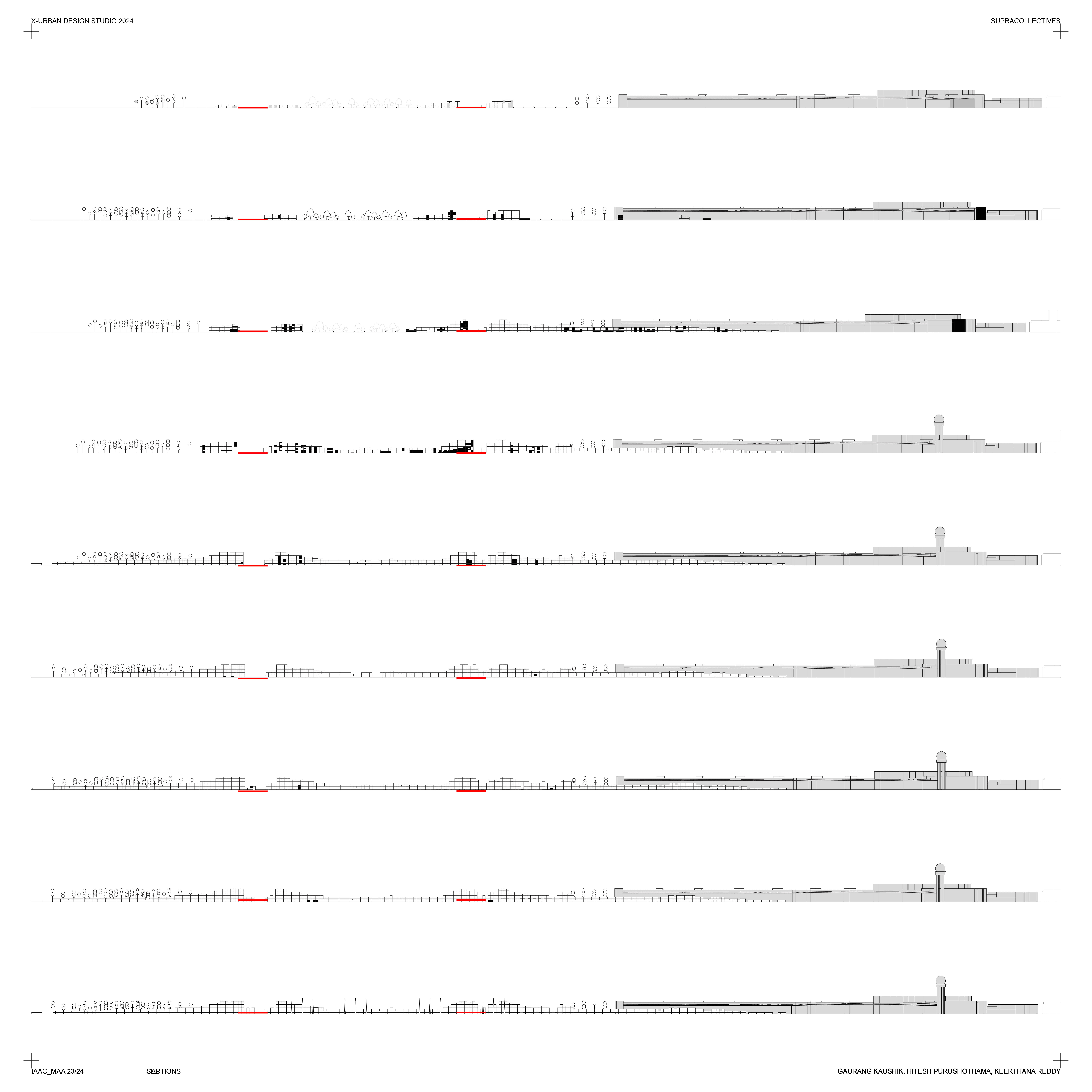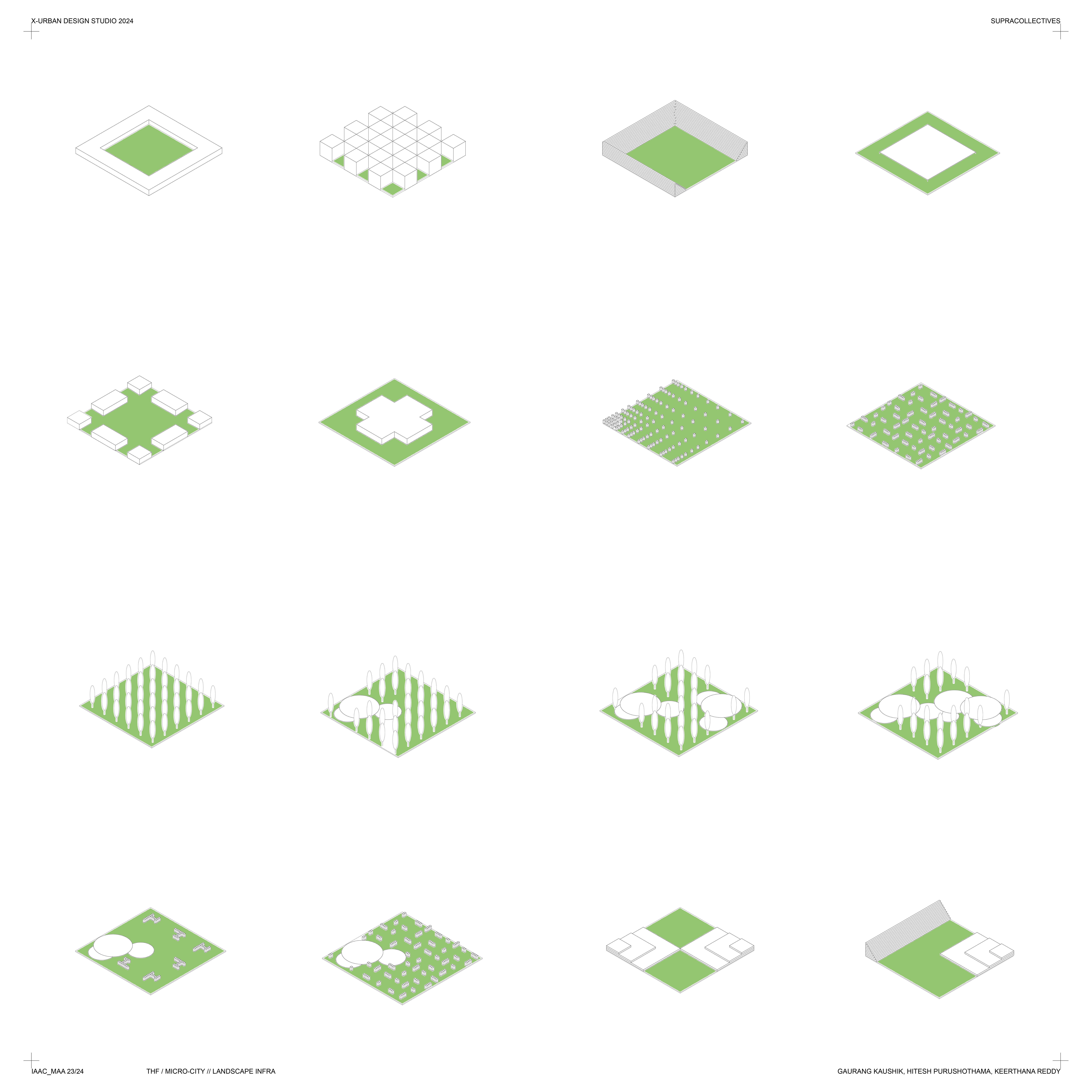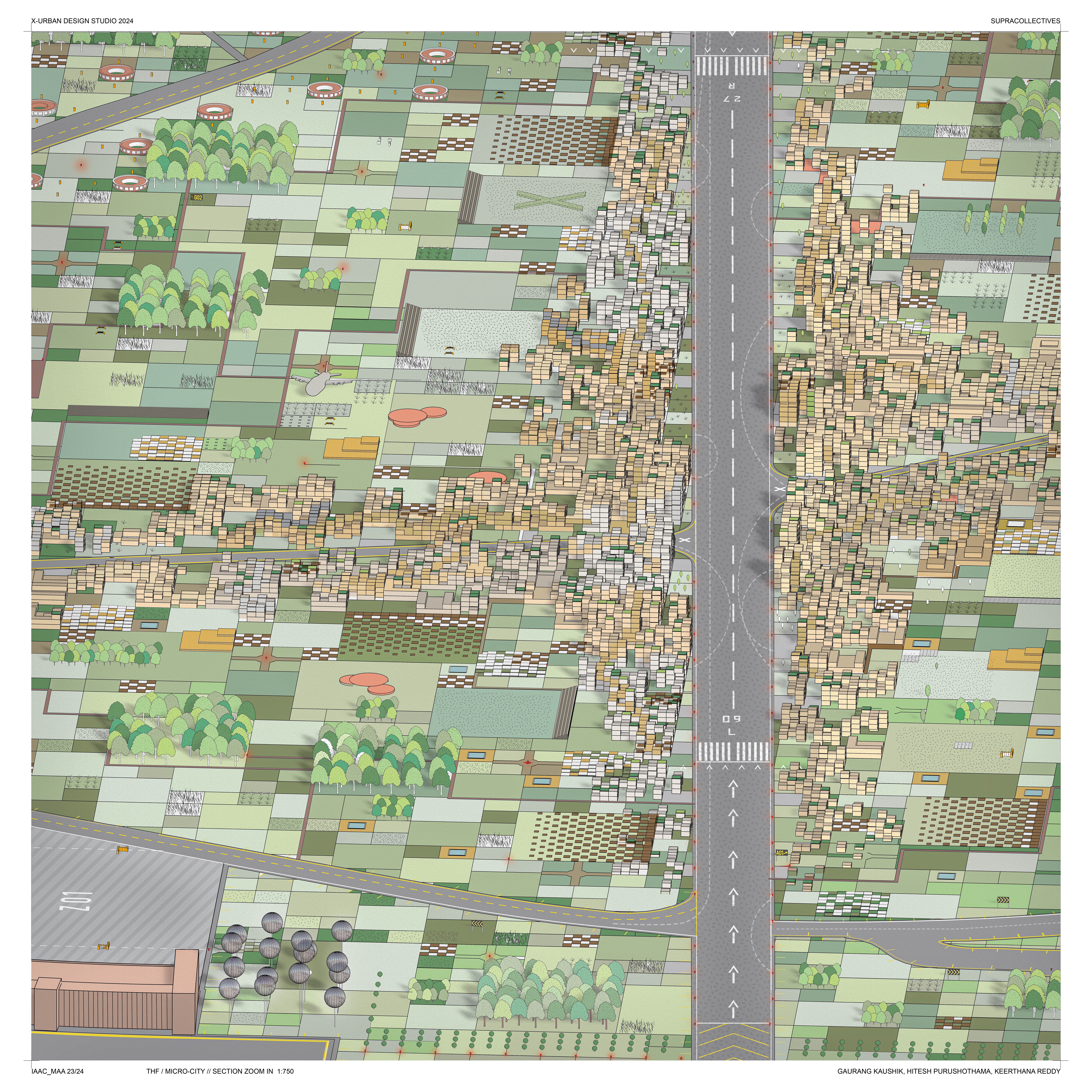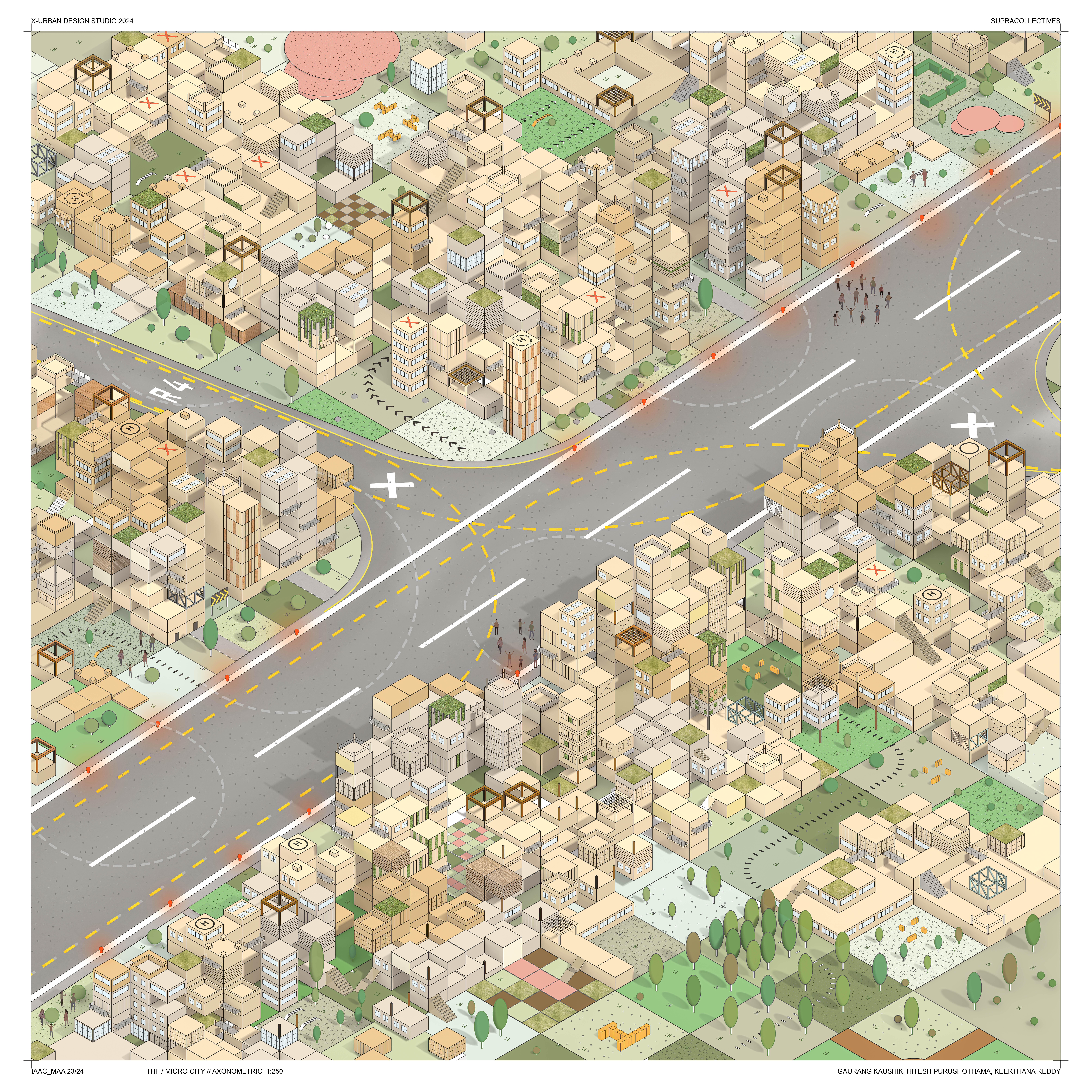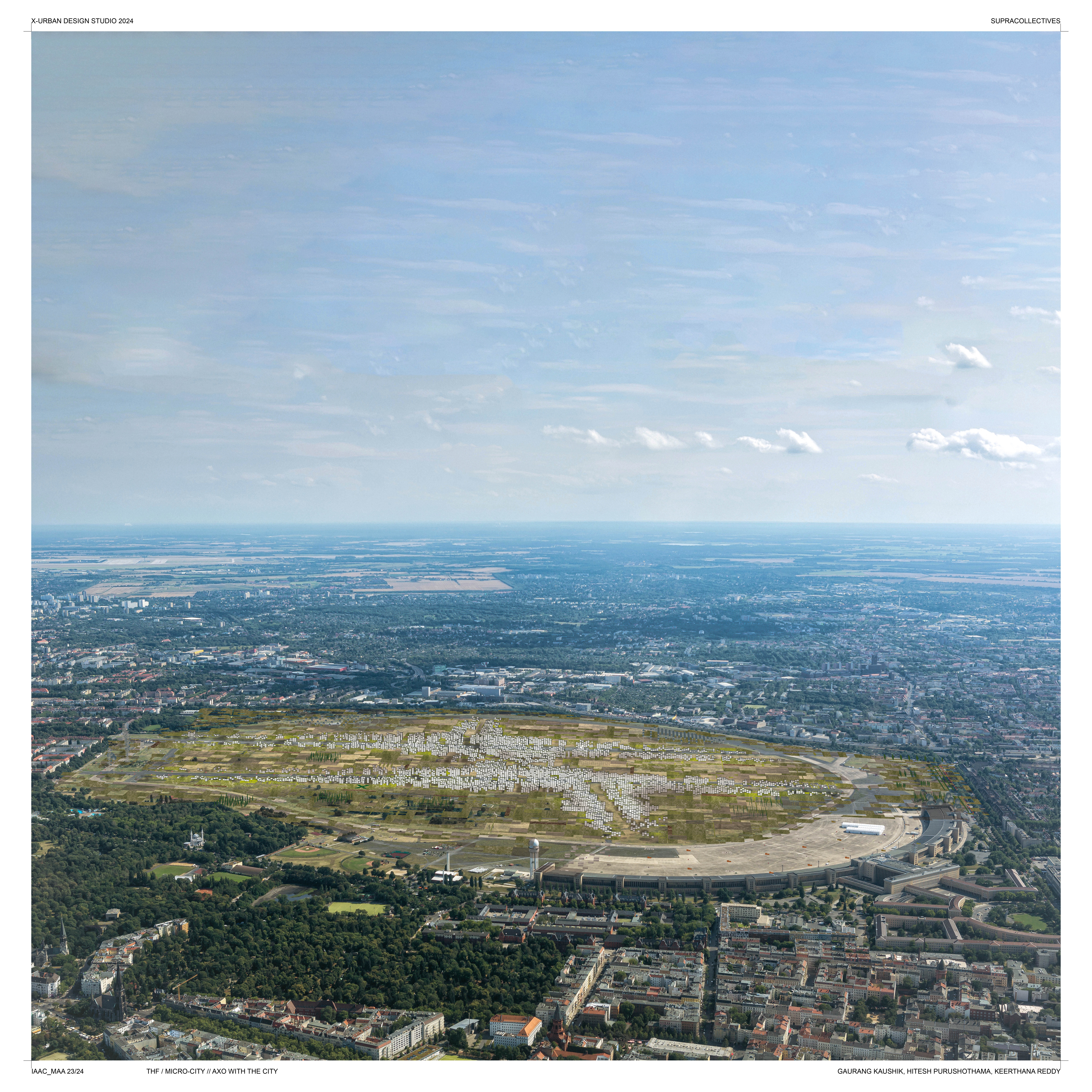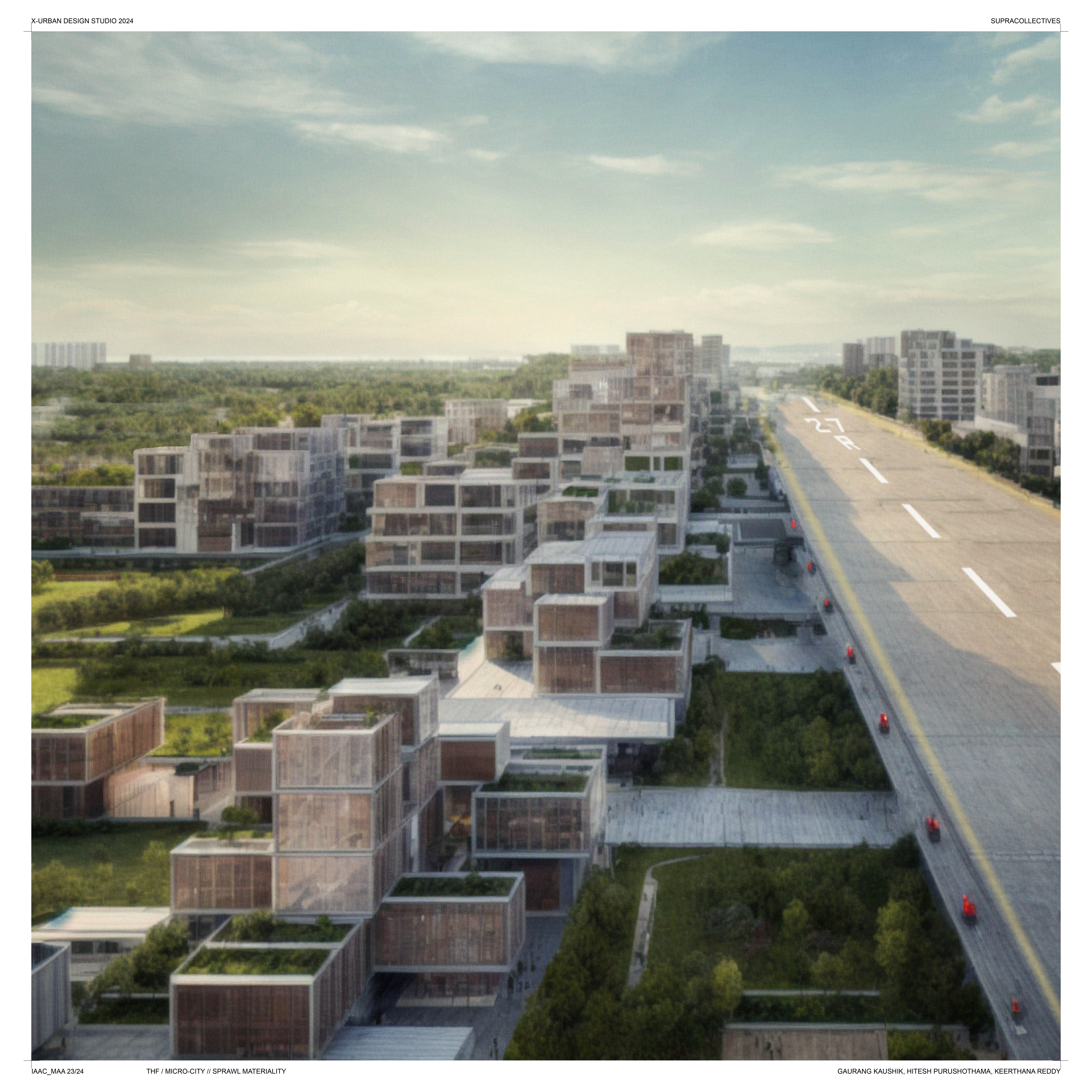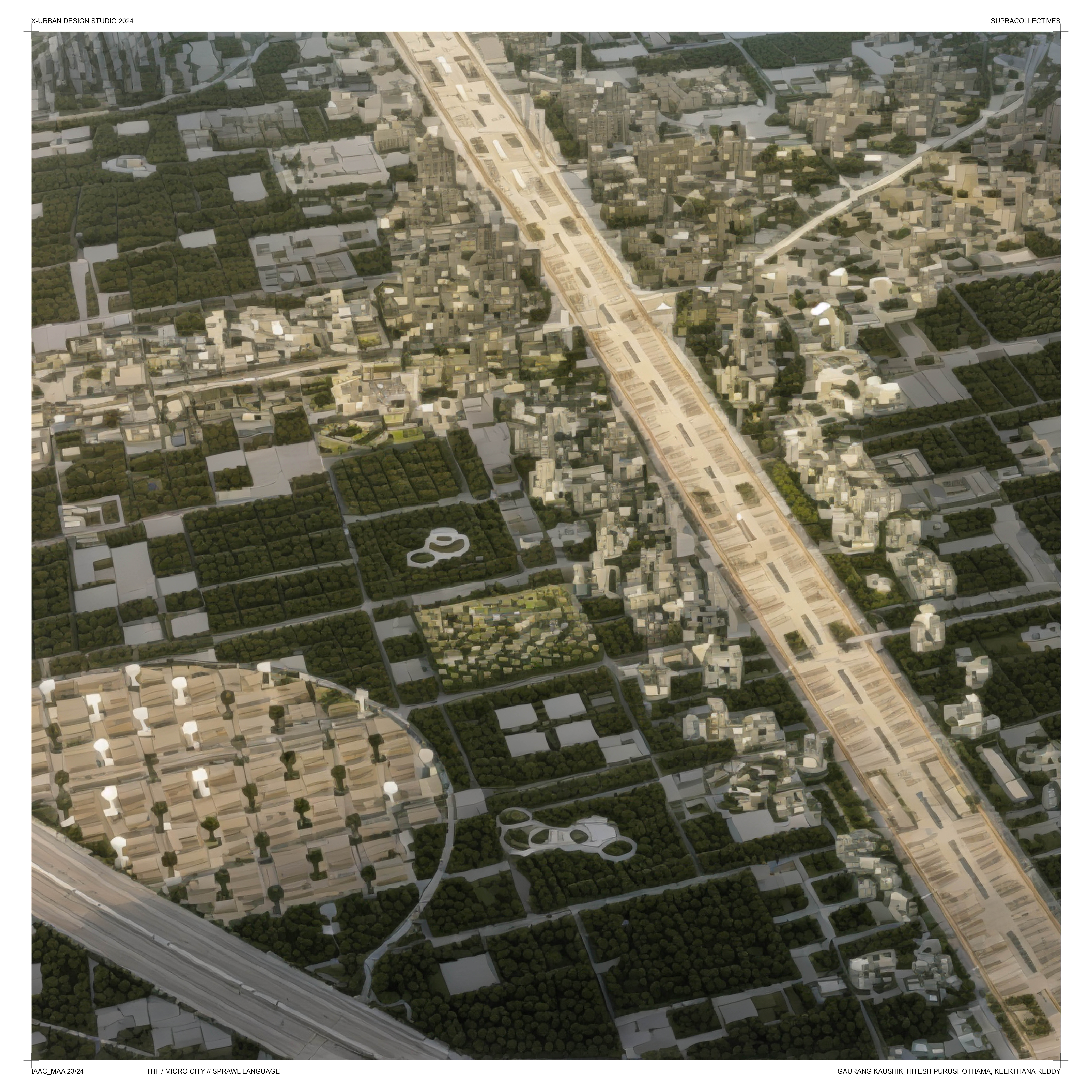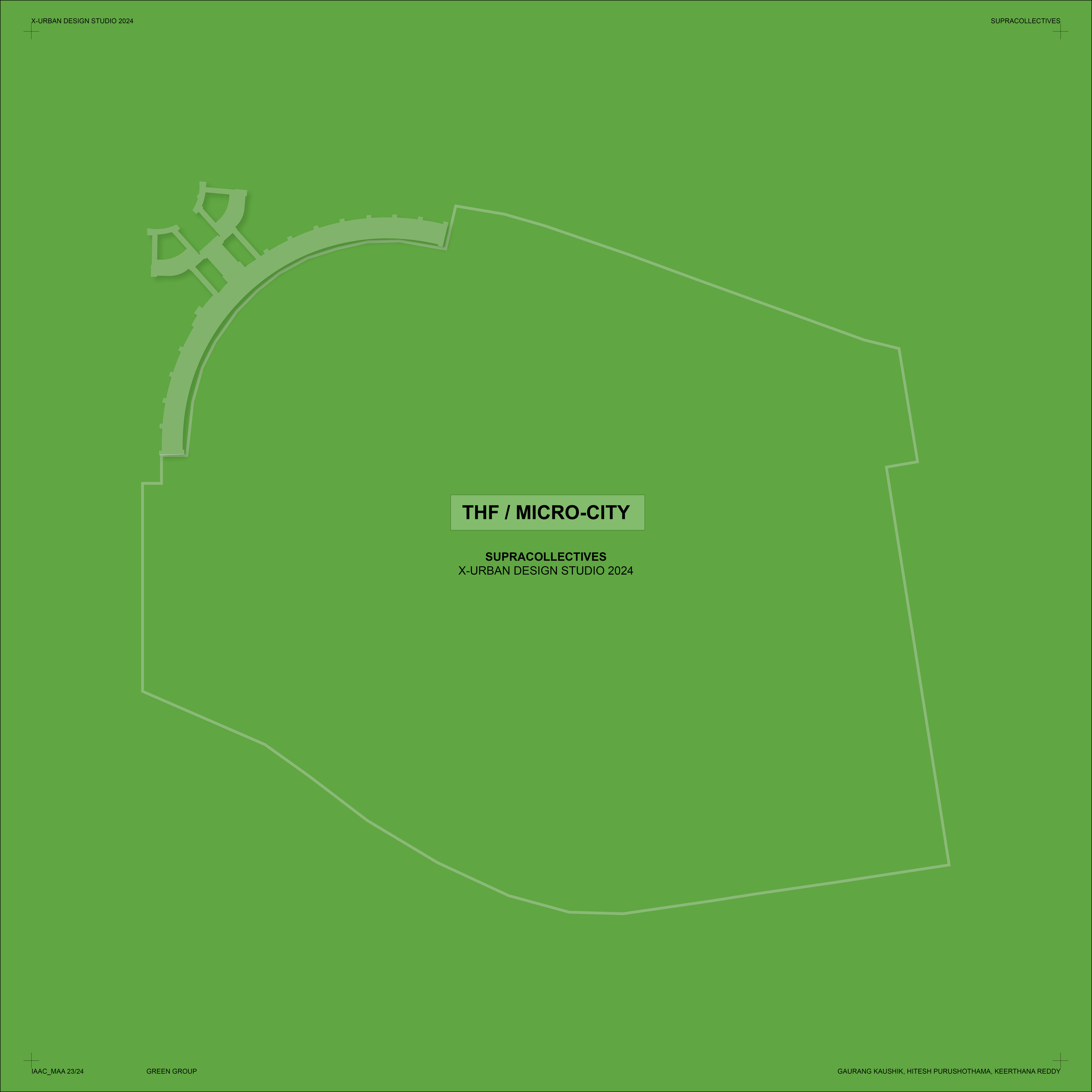The proposed vision for Tempelhof is articulated as a ‘city within a city’ arranged along the two airstrips of the former airport, extending perpendicularly to emphasise a dual directionality. Buildings are conceived as flexible micro-communities built on organic/biodegradable materials, with the possibility of growing or ‘de-growing’ through time.
The design strategy aims to trigger a need for subtle integration of urban technologies to foster public use. To prioritise sustainable growth and energy production, wind turbines, solar panels, greenhouses—are embedded into the landscape, guided by climate and land energies. A grid system distributes these elements, following a produce-and-consume model that balances energy and food production with household needs.
